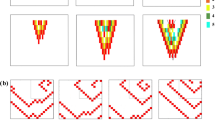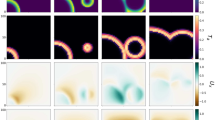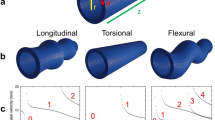Abstract
Unlike the case of skeletal muscle, the direction of myocardial contraction does not coincide with the direction of work necessary to eject the intraventricular blood, contributing to great complexity of the wall deformation sequence of cardiac contraction. The advent of advanced techniques (CT^1^, MRI^2,3^, SPECT^4^, echocardiology^5-9^, electrocardiography^10^, and magnetocardiography^11,12^) has enabled to the evaluation of cardiac function and disorders by the measurement of blood flow, pressure, electrical reaction process, and other factors. However, complexity of the contraction sequence is still not fully understood because the dynamic mechanical excitation process, which directly correlates with contraction, cannot be accurately measured based on these electro-magnetic phenomena. Here, developing and using a noninvasive novel imaging modality with high temporal and spatial resolutions^13-17^, we show that the propagation of the mechanical wave-front occurs at the beginning of each cardiac contraction and relaxation sequence for the first time. The former occurs about 60 ms prior to the ordinarily accepted onset time of the contraction (R-wave of the electrocardiogram). From the apical side of the interventricular septum, close to the terminal of the Purkinje fibers (specialized to carry contraction impulses), a minute velocity component with an amplitude of several tenth micrometers is generated and propagates sequentially to the entire left ventricle, that is, it propagates from the apex to the base of the posterior wall, and then from the base to the apex of the septum, with a propagation speed of 3-9 m/s. The latter occurs at the end of the first heart sound at the apical side and propagates to the base side with a speed of 0.6 m/s. These physiological findings, unlike the widely accepted myocardial excitation process, have potential for accurate assessment of myocardial tissue damage in coronary disease and cardiomyopathy. This dynamic measurement modality is also applicable to various tissues in biology.
Similar content being viewed by others
Article PDF
Author information
Authors and Affiliations
Corresponding authors
Rights and permissions
About this article
Cite this article
Kanai, H., Tanaka, M. Visualization of Minute Mechanical-Excitation/Relaxation Wave-front Propagation in Myocardial Tissue. Nat Prec (2010). https://doi.org/10.1038/npre.2010.4931.1
Received:
Accepted:
Published:
DOI: https://doi.org/10.1038/npre.2010.4931.1



